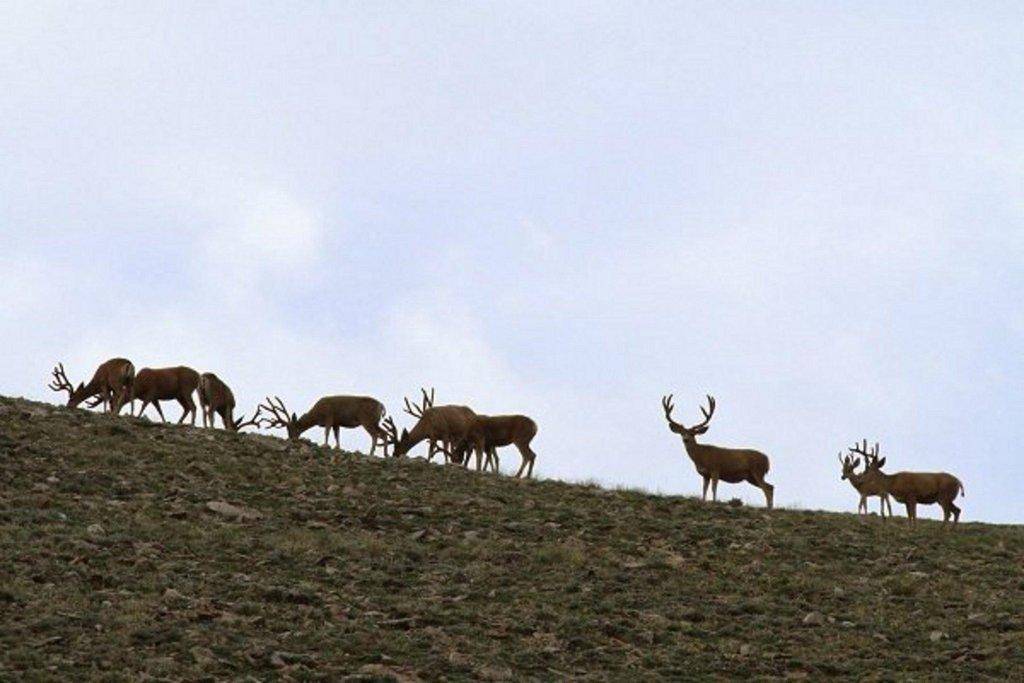Utah Division of Wildlife Resources Press Release
On Dec. 5, the Utah Wildlife Board approved several big game changes. All approved changes will be available in the 2014 Utah Big Game Field Regulations Guidebook and online beginning later this month at www.wildlife.utah.gov/guidebooks.
Some changes include the following:
Hunting mentor program.
A new program that should build bonds and memories between young hunters and their parents, stepparents, grandparents and legal guardians, will start in Utah in 2014.
The Hunter Mentoring program allows a non-licensed youth hunter to accompany a guardian into the field. Once an animal is found, the youth can take the animal and then tag it with the mentor’s tag.
As soon as an animal is taken, the hunting season is over for both the mentor and the youth hunter.
One spike bull elk hunt eliminated on the Monroe.
Rifle hunters will not be allowed to hunt spike bull elk on Unit 23, also known as the Monroe unit in 2014.
Division of Wildlife Resources biologists are concerned about the number of spike bull elk that are being taken during the rifle hunt each fall. The Monroe unit is a popular and easily accessible hunting area in south-central Utah.
A rifle hunt for spike bull elk will not be held on the unit in 2014. Archery and muzzleloader hunts for spike bulls will still be conducted on the unit.
Archery hunting on waterfowl management areas.
Starting in 2014, six of Utah’s waterfowl management areas (WMA) will be open to archery deer and pronghorn hunting. The six WMAs are Bicknell Bottoms, Brown’s Park, Clear Lake, Desert Lake, Locomotive Springs and Redmond. Both the archery deer and archery pronghorn hunts will be over before the general waterfowl hunt starts in October.
New bighorn sheep hunt in north-central Utah.
For the first time in six years, bighorn sheep hunting will be allowed in three areas in north-central Utah. These areeas include Mount Timpanogos, Mount Nebo and Rock Canyon near Provo.
The overall number of bighorn sheep in the areas has not increased much during that time, but the herd now includes some big, impressive rams. Starting in 2014, a limited number of hunters will have a chance to hunt the rams.
“Even if one or two rams are taken, plenty of rams will be left in the herd to breed with the ewes and keep the herd going,” explained DWR big game coordinator, Justin Shannon.
Splitting the rifle hunt on the Book Cliffs unit.
The number of bucks per 100 does on the northern part of the Book Cliffs limited-entry deer hunting unit, should increase after the board approved a DWR proposal to split the unit into two areas for the rifle hunt.
The southern portion of the Book Cliffs is harder to hunt, so most hunters hunt the northern portion. The increased pressure has reduced the number of bucks on the northern part of the Book Cliffs.
“Splitting the unit into two areas for the rifle hunt will allow us to reduce the number of permits for the northern area,” Shannon stated. “Reducing the number of permits will increase the number of bucks in that area. At the same time, we can increase the number of permits for the southern portion. Plenty of bucks are available to hunt in the southern area.”
Magnifying scopes, draw locks and crossbows.
Another change the board approved will allow the use of three items during Utah’s any-weapon big game hunts. These weapons include magnifying scopes on muzzleloaders, draw lock devices on bows and the use of crossbows.
During the any-weapon hunts (commonly called the rifle hunts), hunters may use rifles, muzzleloaders or archery equipment.
“We don’t have concerns with people using scopes, draw lock devices or crossbows during the any-weapon hunts,” Shannon exlained. “By choosing to use archery equipment or a muzzleloader, the chance they’ll take an animal is lower than if they used a rifle.”
Deer transplants.
Another change approved by the board established eight areas in Utah where mule deer can be moved to. The eight deer hunting units are in rural parts of the state. Each unit has enough winter range to support additional deer. Each area also has held more deer in the past than it is currently holding.
The following are the units that could receive deer and where they are located in Utah:
Unit Location
1 (Box Elder) Northwestern Utah
11 (Nine Mile) East-central Utah
14B (San Juan, Elk Ridge) Southeastern Utah
17C (Wasatch Mtns, Avintaquin) North-central Utah
19A (West Desert, West) Western Utah
20 (Southwest Desert) Southwestern Utah
21A/B (Fillmore, Oak Creek/Pahvant) Western Utah
24 (Mt. Dutton) Southwestern Utah
Shannon says deer will be moved only in situations where populations are drastically exceeding their population objectives and are starting to damage habitat. Surplus deer from these areas can be taken to bolster deer populations on the eight units.

